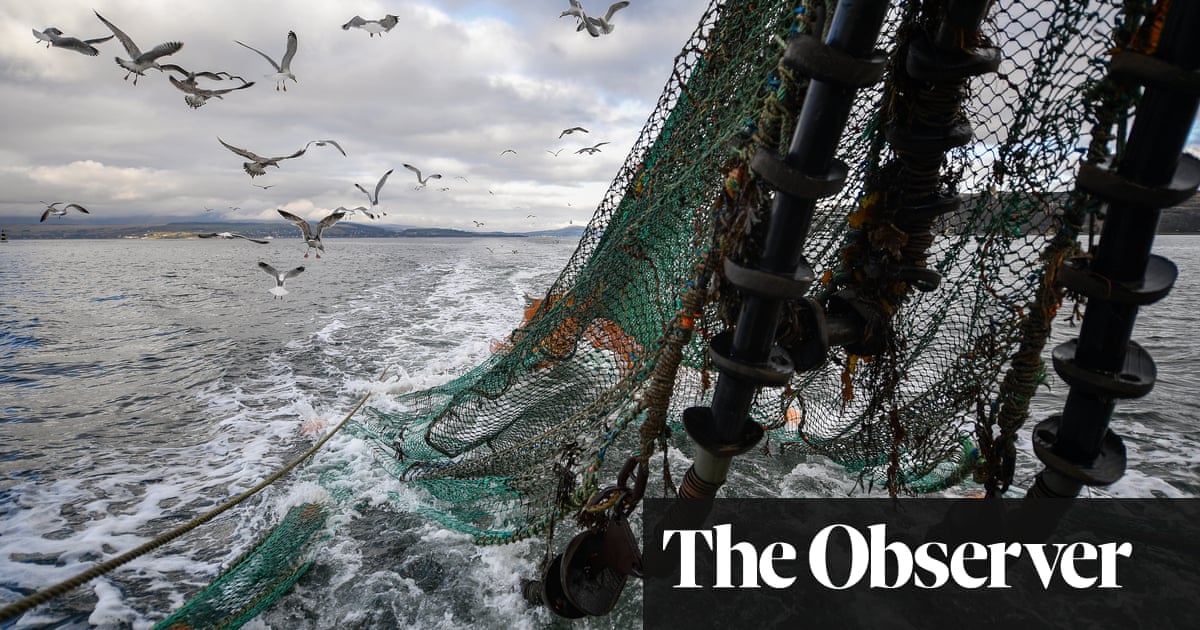
Farmers are being called upon to dedicate 1% of their land to nature and carbon sequestration in an unexpected way – by farming in straight lines.
The call to make a commitment to nature and the climate in the run-up to the crucial Cop26 UN climate summit in Glasgow comes from WildEast, the farmer-led rewilding movement that is encouraging landowners large and small to create wildlife-rich places across East Anglia.
Since its launch a year ago, the WildEast campaign has gathered pledges from more than 80 farmers in the region to devote 20% of their land to nature, as well as commitments from schools, churchyards, councils, people with gardens, and the train company Greater Anglia, which has pledged to rewild more than 50 railway stations in the region.
But the charitable trust’s founders admit they have faced “pushback” from some farmers, who argue it is easy for grand estates with woodland, riverine landscapes or heathland to pledge a fifth to nature but impossible for small farmers, for whom every acre of food production is crucial to their livelihood.
Hugh Somerleyton, the co-founder of WildEast, has committed 20% of his 5,000-acre estate to nature, rewilding lakes, heathland and meadows, but has this year found an extra 0.5% for nature on the 3,000 acres he farms for food by “straight line farming”.
This involves measuring fields to sow crops in precise squares or rectangles, in the process cutting out irregular areas and corners that are often less productive anyway.
By doing this, conventional arable fields have “wild edges” which are filled with wildflowers and invertebrates.
“We save time with machinery, we save carbon, and we save nature because we’re leaving wild edges,” said Somerleyton. “It doesn’t require any effort, it doesn’t require a grant, it just requires changing the angle of your fieldwork. Suddenly we’ve got wonderfully wild edges and it’s not costing me anything.
“I get the argument that it’s easy for me to dedicate land to nature and those decisions might not feel viable for farmers with 300 acres but any farmer can pledge 1%. It’s easy to say, ‘I’m not doing 20%’ but it’s harder to say ‘I’m not doing 1%’. We have a debt to nature and we have a debt to carbon and to the climate catastrophe.”
WildEast hopes that if farmers from the most intensive and carbon-emitting farming region of Britain pledge 1% for nature before the climate summit in Glasgow, it will send a powerful message to governments about the importance of rapidly moving towards net zero.
Although some environmental experts suggest that up to half of all land may have to be kept in a natural state to manage the climate and biodiversity crises, WildEast believe that a 1% contribution is significant because it will show landowners the simplicity and beauty of wilding, and its economic benefits too.
They hope more landowners will be converted to the idea, adding a fraction each year to reach 20% over the long-term.
Two of WildEast’s founders are major landowners but the charity is keen to stress that it is seeking wild commitments from more than just farmers, building an online “map of dreams” showing people’s 20% pledges for nature from all sectors of society.
“WildEast is an attempt to democratise nature recovery, a place where everyone – backyard, prison-yard, schoolyard, churchyard, farmyard – can record their witness statement and pledge their 20% – the magic number nature needs to thrive in our hard-working landscapes,” said Somerleyton. “Nature recovery needs to be about everyone and everywhere.”
The campaign is currently in talks with major non-farming landowners in the region, including energy companies, government agencies, major charities and other NGOs,
Co-founder Argus Hardy said: “The chaos and anarchy of the pledges coming through is what’s been really exciting. We’re green behind the ears and learning so much – the majority of people who are pledging are way ahead of us.”
According to Hardy, one lesson from WildEast’s first year is that providing areas for nature does not mean abandonment but that wildlife can be “farmed” as part of a longer rotation, with different soils allowed to rest and regenerate, as practised in th increasingly popular regenerative farming.
In Suffolk, Somerleyton has watched his newly rewilded estate become a blizzard of yellow ragwort flowers this summer, a wildflower traditionally demonised by livestock farmers, with an old law still obliging landowners to control its spread because it can be toxic to horses.
“It’s the floral wolf. It’s reputation and ‘danger’ is massively bigger than its reality. I hope wild edges will become as normal as it was for my father’s generation to constantly ‘tidy up,’” he said. “We’ve got to retrain our eyes to see the tangled ‘mess’ of nature as something to rejoice in. Changing your farming system is not just economic, it’s cultural, and any cultural shift takes time. That’s what we’re battling – culture.”












